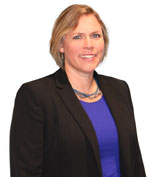Project Description

RESEARCH AREAS:
- Philosophy of Astrophysics
- Science Policy
Open Science
CONTACT:
SARAH GALLAGHER
Director;
Institute for Earth and Space Exploration
Professor;
Department of Physics and Astronomy, Western University
Dr. Sarah Gallagher is a professor of Physics and Astronomy and the Director of the Institute for Earth and Space Exploration at Western University. Her astrophysics research focuses on studying growing supermassive black holes at the centres of distant galaxies and the interactions between galaxies in crowded environments. She has over 100 refereed papers that include data from 10 different space observatories, and her research has been recognized with an Ontario Early Career Researcher Award and a Western University Faculty Scholar Award. From 2018-2022, she served as the first Science Advisor to the President of the Canadian Space Agency. In this role, she advised the CSA Executive Committee on space science investments and capacity development and sat on the Departmental Science Advisor Network. She was a co-founder of the pan-Canadian CanCOVID research network, set up to connect the research community in response to the global pandemic. This work was recognized with the Purvis Memorial Award by the Society of Chemical Industry. She regularly speaks to the public of all ages about black holes, space, and equity and inclusion in the space sector.
I am an extragalactic astronomer with an inclusive attitude towards the electromagnetic spectrum. I’ve used observations from the radio through the X-ray to study quasars (actively growing supermassive black holes) and compact galaxy groups. The growing black holes powering quasars are found in the centres of distant galaxies, and a quasar can outshine all of the stars in its galaxy a thousand times over. While they are growing, quasars often also spew out material at high speeds in energetic winds. My research focuses on understanding the relationship between black hole growth and winds, the properties of these winds, and their interactions with their host galaxies. A compact galaxy group comprises a handful of large galaxies within a few galaxy radii of eachother. As a result, the galaxies undergo repeated gravitational encounters that alter their shapes and star formation histories over time. In addition to being spectacularly beautiful, this unusual environment allows our team to study how cold gas – the fuel for star formation – is processed while being pushed and pulled by multiple galaxies in close proximity. In this context, I’ve come to appreciate the integral role that computer simulations play in all stages of modern astrophysics research – from designing new observatories to interpreting complex astronomical survey data. This topic has grown into a new research focus into the philosophy of astrophysics.
- Sarah Gallagher and Chris Smeenk, “What’s in a Survey? Simulation-Induced Selection Effects in Astronomy,“ 2023, Philosophy of Astrophysics, pp. 207-222
- Chris Smeenk and Sarah Gallagher, “Validating the Universe in a Box,” Philosophy of Science, 87 (5):1221-1233 (2020)
- Lenkic, Tzanavaris, Gallagher et al. 2016 “The ultraviolet and infrared star formation rates of compact group galaxies: an expanded sample,” MNRAS, 459, 2948
- Tammour, Gallagher et al. 2016 “Insights into quasar UV spectra using unsupervised clustering analysis” MNRAS, 459, 1659
- Gallagher et al. 2015, “Investigating the structure of the windy torus in quasars,” MNRAS, 451, 2991
- Fedotov, Gallagher, et al. 2015, “A comprehensive HST BVI catalogue of star clusters in five Hickson compact groups of galaxies,” MNRAS, 449, 2937
- Tammour, Gallagher, et al. 2015, “Tracing quasar narrow-line regions across redshift: a library of high-S/N optical spectra,” MNRAS, 448, 3354
- Desjardins, Gallagher, et al. 2006, “Some Like It Hot: Linking Diffuse X-Ray Luminosity, Baryonic Mass, and Star Formation Rate in Compact Groups of Galaxies,” ApJ, 790, 132
- Vulic, Gallagher, & Barmby 2014, “Faint X-Ray Binaries and their Optical Counterparts in M31,” ApJ, 790, 136
Faculty Research Domains
Rotman Institute faculty members are listed below by shared research areas. Visit individual member profiles to learn more.
